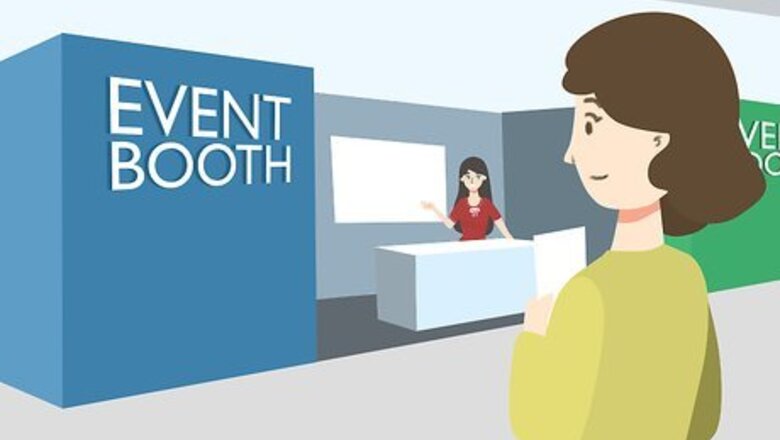
views
Before the Event
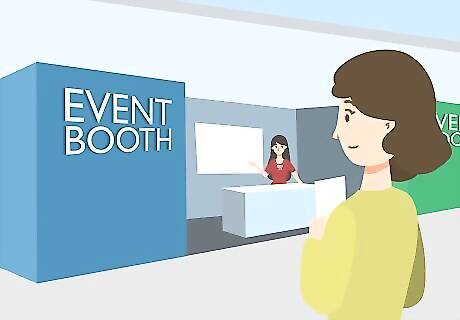
Seek out the appropriate event for your booth. If you can attend a similar event as a member of the public, do so. Notice what other presenters are doing. Bring a notepad and paper, taking notes on what you appreciated in certain booths and what you thought other booths could have done better. As you do, keep your audience in mind. Activities, displays and giveaways for seniors are far different than those for boomers, x-ers and other groups.
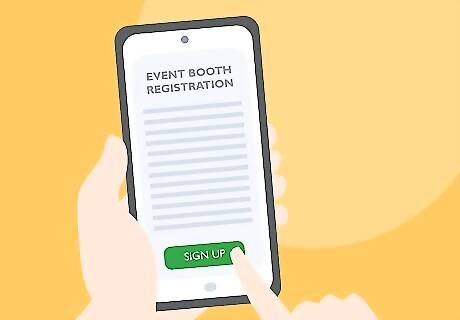
Sign up early. Find out well in advance what is required to run a booth at the event you wish to attend. Apply and pay any fees ahead of time, too. Now is the time to contact event organizers with any special requests. If you need lighting or electricity in your booth, for instance, be sure to request it well in advance. If you need a sound system, refrigeration, vehicle access, or anything else besides your designated space, ask for it right now! If you have a choice of booth locations, choose the one that will have the most traffic. Failing that, try to be near other booths or concessions that will attract the sort of traffic that you want.
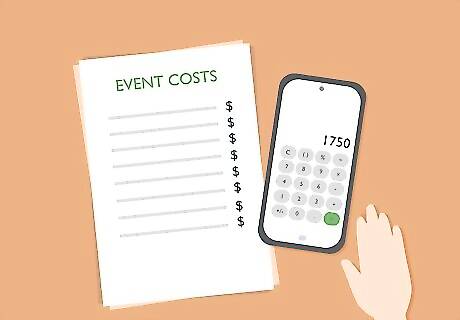
Keep track of all costs associated with the event, including booth rental, travel, hotel, giveaways, food, fees, etc. When the event is over you will want to compare its cost and results with other events to decide if you want to return.
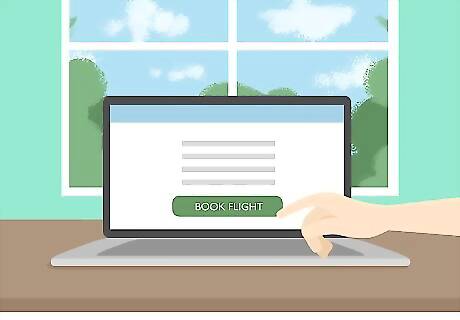
Make reservations. If you must travel to get to this event, reserve lodging, book flights, and secure a rental car. Large-scale events may completely fill the facilities near the venue, so secure these accommodations as soon as you're certain you will attend.
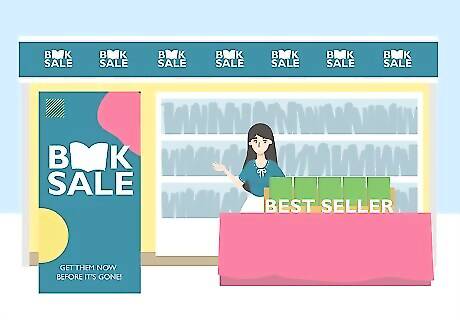
Gather or produce your supplies. Your supplies will depend on the exact nature of the event and what you are promoting, but consider the following: Displays and signs. At the very least, have at least one large banner stating clearly who or what you are promoting. Additional displays can help to inform your audience, too. Don't expect anybody to read large amounts of text while wandering by a booth. Instead, use large, eye-catching graphics and save the details for your flyers. A consistent look and feel between your different displays will help give your booth a unified, complete feel. Freebies. A classic way to attract people to your booth is to give something away. Samples of something related to your message are ideal. Usable items (pens, t-shirts, bags) with your name and insignia printed on them can act as long-term reminders and even walking advertisements. Even a few dollars' worth of candy or a plate of munchies can get people to approach. Literature. If you want people to contact you and remember you after the event, plan to hand out business cards, flyers, or brochures relating to your message. Bring more than you think you will need. Demonstrations. If you can demonstrate something related to your organization (such as a product or service) or display the results of a successful project or activity, bring it for show and tell. Better yet, allow your visitors to participate in some way, perhaps by trying out what you are promoting. Activities. Bring these to draw people to your booth. Holding a drawing for a larger prize can net you a bowl full of contact information. Even if the activity is a beanbag toss or a portable putting green, it can bring people in for long enough to talk to them and let them know why you're there. A canopy. If your event is outdoors, a portable canopy, tent, or gazebo is indispensable for keeping the sun (or rain) off. It will also help you look more official and professional. If it can match your organization's colors or just be brightly colored, it will help make your presence that much more noticeable. Be sure that you learn in advance how much space the event will permit you to occupy. A table and chairs. Again, the event organizers may provide these, or not. If you're not sure, ask. Weather proofing. If the booth is outdoors, you may need weights to hold down papers, clips or clothespins to keep tablecloths and signs from blowing away, and so on. Of course, also dress for the weather you expect. Tie downs and tools. If you know you will be assembling your own booth, table, or displays, make sure to bring the tools you'll need. Screwdrivers, pliers, and an adjustable wrench could come in handy. Scissors, packing tape, safety pins, and rope are good ideas, too. If you're not sure what you need to assemble your booth, do a dry run in advance at home or at the home office. Note: With current aviation restrictions, make sure that you pack assembly tools in your checked luggage, not your carry-on, to avoid hassles. Nothing worse than having any tools that will be useful at the show for assembly confiscated due to safety restrictions. A cart or dolly. Especially if it is a large event, don't assume that you'll be able to park anywhere close to your booth. A handcart or dolly will help to bridge the gap. Lights. If you think you will need lights, be sure you will have a source of electricity to power them. Water. You'll be talking a lot, and it may be costly or inconvenient to visit the event concessions. A vehicle large enough to carry everything you will need. If you need to rent a van or truck, make arrangements in advance.

Get help. If your booth is doing its job, you'll have lots of people to talk to over the course of the event. Don't try to make it a one-person show. Even one other person can help to keep you composed and your voice intact. If your booth is fairly popular, you'll want help just to make sure that everybody who is interested has somebody to talk to without waiting in line. If at all possible, arrange the schedule so that people work in shorter shifts. It's tiring to stand for long periods of time and say the same things over and over.
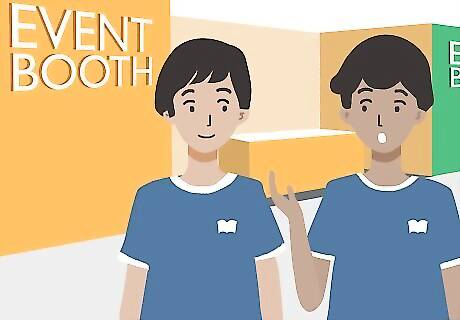
Prep your help. Let them know what they're offering the public, whom they're approaching and how, where the various facilities nearby are, and when to arrive. They'll be speaking for your organization as experts, and they'll come across more professionally if they're informed, even if they are volunteers.

Dress for success! Try to staff your booth with attractive people who are attired appropriately, yet draw attention. This will set your booth and organization apart from the maze of other booths and make you part of the show. If your organization has a uniform or even a t-shirt, wear it, and encourage your colleagues to do the same. Customized t-shirts are relatively inexpensive to produce even in low volumes. Dress alike. Even if you simply agree to wear jeans and a t-shirt in your organization's color, you'll look more like you are meant to be there. Dress professionally. A business suit will show that you're serious and give your message that much more clout. Wear costumes or dress thematically. If it's a festive atmosphere, or your group is theatrical, wearing clown costumes, ball gowns, or big, silly hats could attract a lot of attention. Use professional spokes models if appropriate. Attractive people who know how to "work" a crowd can be a powerful force to draw attention to your booth and your organization. Make sure you use professional people who understand how to behave correctly.
During the Event

Show up early. Give yourself plenty of time to set up the booth and scope out the facilities before the crowds descend. Being fully set up as soon as the doors open means that you will not waste event time fumbling with displays or boxes instead of communicating your message.

Look at your booth from outside. Once you've set up, walk outside and see your booth from the point of view of your visitors. Are your signs clearly visible from the different directions where people will approach? Is your booth inviting? Do you have any distracting loose ends showing?

Consider your traffic patterns. Do you want to be behind a table with your audience in front, or do you want the table at the back of your booth so that you can approach people and invite them in?

Be friendly. Talk to your customers. When they walk up to your booth, give them a few seconds, then say, "Hello." They will most likely say hello also. Then smile, and tell them about your booth. Sometimes if you start to talk about something else, like how nice the day is, or how cute the child they have along with them will distract them from your crafts. When you are ringing everything up, you can talk about these things. Remember to smile and say "Thank you, come again!" Also hand them a business card if you have one and inform them of where you'll be next.

Convey your message. However you draw people in, make sure that they leave your booth with some basic understanding of why you are there.

Quiz people about their interests. It involves them in the conversation and it tells you which direction to go with your pitch, be it informational, commercial, or somewhere in between.

Distribute your flyer, brochure, or other handout. These items will remind people of your organization, your contact information, and your message after the excitement and activity of an event has ended.

Exchange contact information. Tell interested visitors how they can follow up and how you will follow up. Then, be sure that somebody in your organization does follow up promptly. Keep track of the source of leads so that you can compare the relative effectiveness of one event with another.

Clean up your own area. Put yourself in the shoes of the staff for a large-scale event or venue. Then, dismantle your own booth at the end of the event and make sure any leftover litter or debris makes it into the trash. It's good manners and it will help to keep the event organizers and venue staff on your side for next time.

Write down your experiences. If you will ever have a booth again, make some notes about your experiences this time. Write down what you brought, what you should bring next time, what you could have done without. Write down what was effective and what was not, and anything else you learned from this event. Next time, you can use your notes to help run things more smoothly. If somebody else runs the next booth, you can easily advise them on what you have learned.




















Comments
0 comment